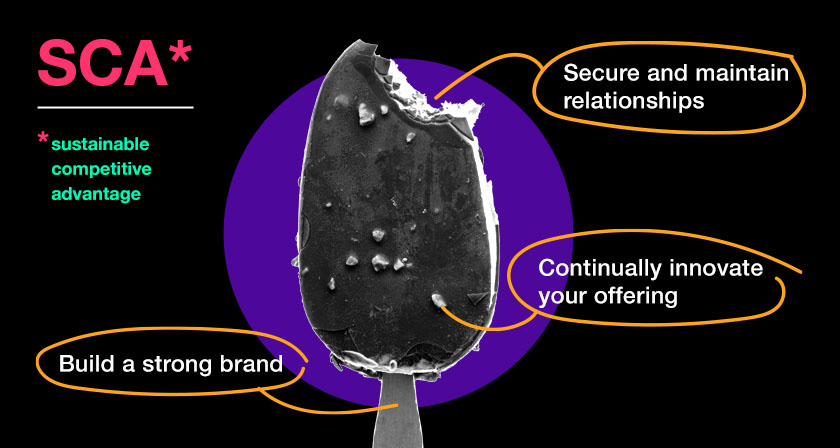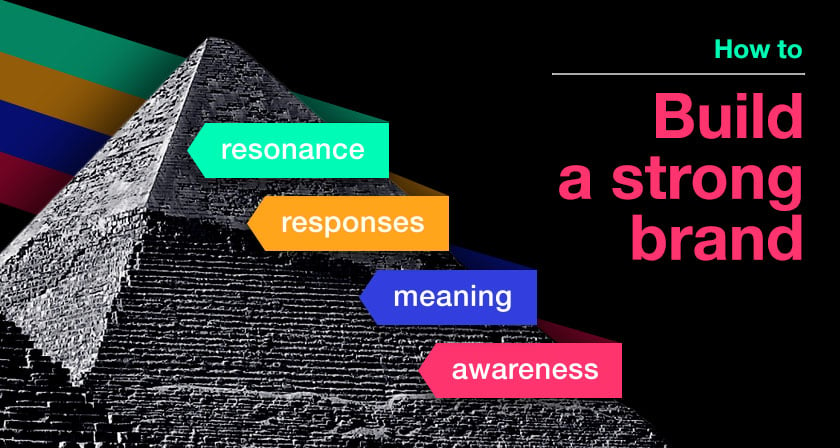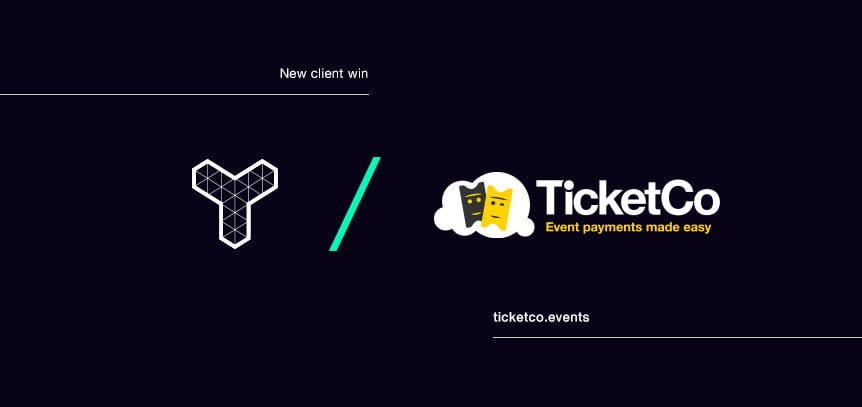
How does a company stand out in an existing market?
B2B companies in existing markets need to stand out. Having a sustainable competitive advantage can help.
It’s no secret that companies in existing markets face competition – a lot of it. According to a 2021 report from B2B International, building a strong position in the industry is a top priority and concern for B2B professionals. But how can you stand out when you have many direct competitors?
Firstly, it’s important to recognise the rules of the market you’re in.
Red and blue ocean markets
According to W. Chan Kim and Renée Mauborgne’s best-selling book Blue Ocean Strategy, there are two types of market spaces: blue oceans and red oceans.
The term ‘blue ocean’ refers to uncontested market spaces. Companies in blue oceans create and capture customer demands through market-creating innovation. In doing this, they make their competition irrelevant. Take Salesforce as a classic B2B example. As one of the first companies to go completely cloud-based, the company disrupted the traditional CRM software market and offered a novel solution to businesses.
‘Red ocean’, on the other hand, refers to contested market spaces. In red ocean markets, the industry boundaries are established and well-defined so the typical goals for companies within this space are to outperform the competition and exploit existing customer demand. This is the case for most industries and companies.
It’s important to note that being in a red ocean isn’t inherently a negative thing, nor does it necessarily mean that there is no room for growth and success. The truth is: all companies will face competition in some way or another – even if you’re in a blue ocean market. In fact, businesses with blue ocean strategies are often vulnerable to fast followers and me-too competitors, who are ready to imitate their products and services with slight improvements.
However, if your company is an already existing market, it’s important to plan and strategise accordingly. Businesses, especially ones competing in red oceans, need a sustainable competitive advantage (SCA).

Why it’s necessary to have a sustainable competitive advantage (SCA)
In red oceans, the ‘rules of competition’ are known and understood by all players in the market. Therefore, company leaders must build barriers that can help them withstand repeated competitive assaults and make them stand out. This is where SCA comes in.
A company only has a good sustainable competitive advantage if all of the following apply:
- The customers actually care about the SCA
- The company does it better than competitors
- The SCA cannot be duplicated easily
How to build SCA
There are many ways to build a sustainable competitive advantage, but there are a few marketing-based sources companies should focus on. These sources are additive and work together to help you gain a competitive position in an existing market.

Build a strong brand
Strong brands are notoriously difficult to copy, which makes them an effective barrier to competitive threats.
Overall, improving a company’s brand equity is a challenging yet necessary activity for marketers because having a strong brand can reduce the amount of customer churn. It’s important that B2B companies do not neglect this task – especially if they are competing within an already existing market. In fact, a longitudinal study in 2020 revealed that B2B professionals are struggling to differentiate their brand even more than they did in 2015.
This suggests that building a strong brand is not only a challenge for B2C companies.
There are many ways to build brand equity, but according to Kevin Lane Keller’s widely popular brand equity pyramid, companies should focus on four things: raising brand awareness, communicating your brand’s meaning, encouraging positive brand responses, and achieving brand resonance.
Brand awareness
Building basic brand awareness is the easiest task for companies to achieve. Whether it’s through launching a product marketing campaign or creating top-of-the-funnel blog content, people who have heard about your brand are more likely to choose you over an unknown brand.
Brand meaning
Communicating your brand meaning is about making sure your customers know exactly how well your product or service satisfies their needs. This is where your value proposition becomes really important. Keep in mind that the way you want people to see your brand can be different to the way they actually see it. Look closely and examine what your points of parity and difference are.
Brand responses
Once a customer has made a purchase, they will make a judgement on how they feel about your brand. Some customers may feel positively about their experience, but some may not. You can’t control how they will react, but you can improve your chances with a robust customer experience program.
Brand resonance
This is the hardest level of brand equity to achieve. When your brand resonates with customers, they are more likely to become loyal brand advocates who will give you access to their network. Not only will they actively engage with your marketing activities (like attending your webinars, for example), they will also be more open to upselling and cross-selling opportunities.
Continually innovate your offering
One clear way to gain a sustainable competitive advantage is to file patents for your product or service, but this isn’t feasible for all companies. So the alternative is to continually improve and develop your offering, so your company stays compatible with market changes and evolving customer needs. This is especially crucial for tech and SaaS companies.
A common misconception is the idea that companies competing in an existing market cannot be innovative, but this isn’t true. In fact, most innovations are incremental and gradual (like a software update, for example).
However, it’s equally important that you don’t make changes for the sake of it. As previously mentioned, developing a SCA is only worth the effort if your customers care about it.
Secure and maintain relationships
Relationships are usually the most effective source of SCA within a B2B context because decision-making processes are more complex and demand a higher level of psychological involvement. According to Gartner, 77% of B2B buyers believe that making a purchase is time-consuming. Because of this, having strong business relationships is beneficial from the buyer’s perspective, as having a trusted seller saves time and reduces their feelings of perceived risk.
For your company, relationships are invaluable because of one main reason: it is extremely difficult for competitors to imitate the partnerships your salespeople have. This is because they often take a significant period of time to build. Nowadays, relationships are no longer just about sales. It’s about nurturing trust throughout the entire customer lifecycle – on an individual level but also on a wider scale. After all, B2B brands that create and make use of opt-in communities are more likely to succeed. This is because a community of loyal advocates won’t only bring in leads, they will also nurture them by answering prospects’ questions and sharing their experiences – all without you having to ask. Plus, they’re an extremely valuable source of data, which is essential for customer-centric feature development.
Once your company has a good deal of relationships and a loyal community of customers, it’s key that your team continues to manage them effectively if you want to maintain this source of SCA.
Conclusion
In short, having and maintaining a sustainable competitive advantage (SCA) is important for companies in existing markets because it’s a powerful way to stand out for the right reasons. Without an unreplicable SCA that customers care about, your business risks losing to others. Competing in a red ocean market doesn’t mean your marketing strategy has to be conventional. If anything, it should be more creative.
Key takeaways
- Companies in an existing market are in ‘red oceans’, a term used to describe contested market spaces with multiple organisations competing for the same segment. Naturally, a key goal for these companies is to outrival each other.
- This is different to companies in ‘blue oceans’, which refers to uncontested market spaces. Their main goal is to capture customer demand with a disruptive product or service that makes the competition irrelevant.
- Because companies competing in red oceans constantly face competitive threats, they need to focus on developing a strategy that allows them to build a sustainable competitive advantage (SCA).
- There are three marketing-based sources of SCA: brands, offerings and relationships. These sources are additive and work synergistically to make your company stand out.
Read the latest positioning trends and insights.
Tap into our brand and product positioning, storytelling, and creative expertise to inspire your next strategic move.

